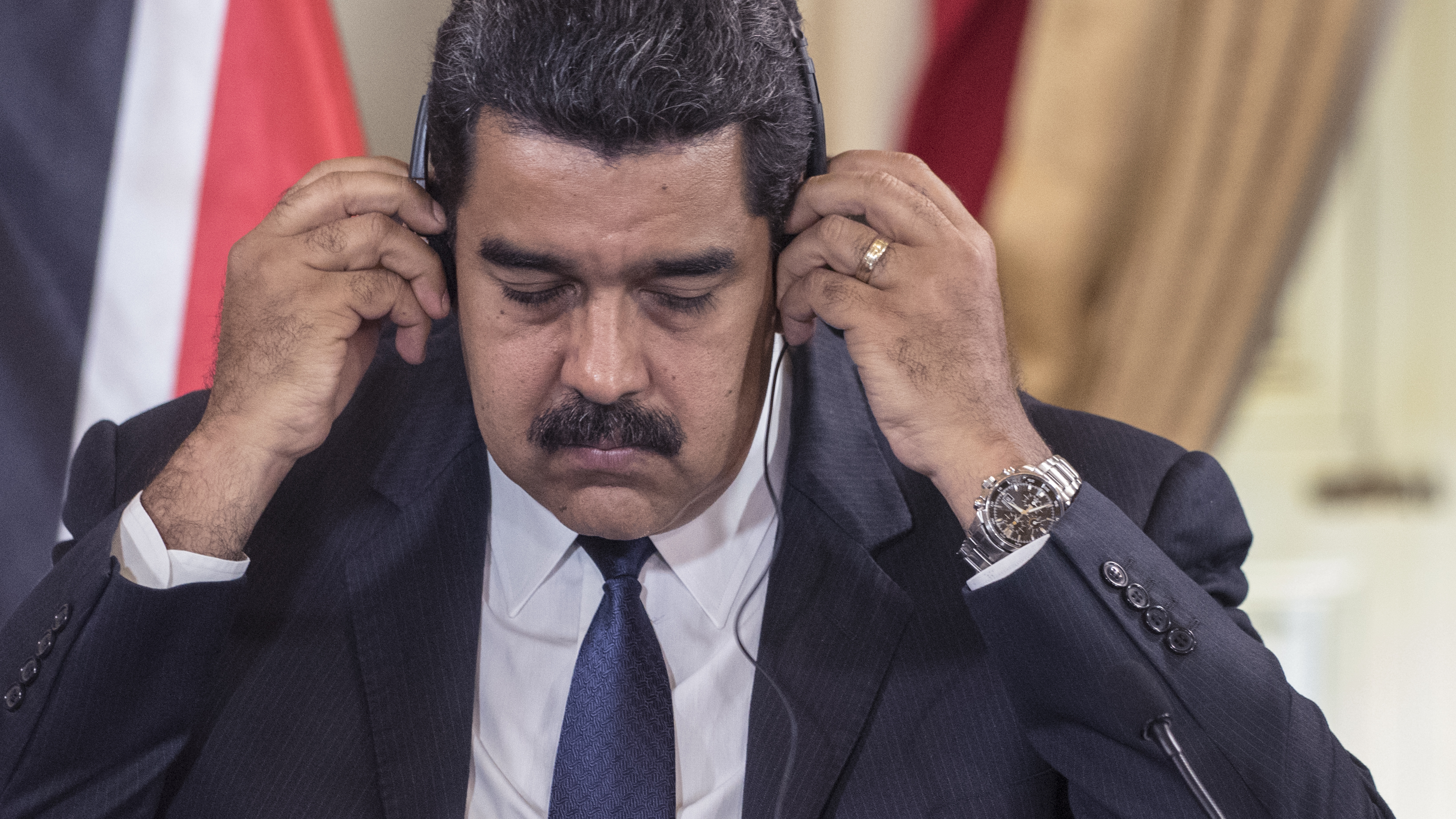Why the Manhattan DA Trump Case Cannot Be Removed To Federal Court

Last month, a Manhattan grand jury indicted Donald J. Trump for violating state law based on alleged “hush money” payments to Stormy Daniels. To be precise, Michael Cohen, who was then-candidate Trump’s lawyer, paid the adult film star before the 2016 election. And after the inauguration, President Trump reimbursed Cohen for those payments. Indeed, Trump allegedly signed the checks to Cohen in the Oval Office. That timing may matter.
Trump now alleges that he made those payments as part of his federal duties, and as a result, the criminal case against him belongs in federal court. Trump’s lawyers have invoked the obscure federal officer removal statute. This statute allows an “officer of the United States” to remove a prosecution from state court to federal court. But the former president can only remove the case to federal court if he was an “officer of the United States.” Fortunately for District Attorney Alvin Bragg, there are good reasons to conclude that the elected president was not an “officer of the United States,” so the case should stay in Manhattan criminal court.
The federal officer removal statute traces its roots to the War of 1812. During the conflict, Congress deployed federal custom officers to enforce an unpopular trade embargo with the United Kingdom. State prosecutors charged these tax collectors with local crimes in hostile state courts. In 1815, Congress authorized any “officer of the customs” to remove such a prosecution from state court to a federal court, which was more likely to provide a neutral forum. After hostilities concluded, this statute expired. During the nullification crisis, tax collectors once again faced the risk of state prosecutions. The Force Bill of 1833 authorized the removal of a state prosecution against “any officer of the United States” who was acting under the revenue law.
Once again, during the Civil War and Reconstruction, federal officers were particularly threatened by prosecution in Confederate and border states. Congress responded by expanding the removal authority beyond customs cases. An 1863 law, for example, permitted the removal of any civil or criminal case “against any officer” who was executing any federal authority derived from the president or an act of Congress. Congress continued to pass various removal statutes over the next half-century. In 1948, Congress approved a law that permitted removal for prosecutions against a more precise and defined category of positions: “any officer of the United States.” The language in the present-day statute remains largely unchanged from 1948. It applies generally to “any officer ... of the United States.”
Stretching back to the presidency of James Madison, who was in office during the War of 1812, removal statutes have uniformly applied to appointed officers, such as tax collectors. Indeed, in 1875, Congress specifically authorized removal for prosecutions against “an officer of either House of Congress,” such as the clerk of the House or the secretary of the Senate, who was discharging his official duties. But that statute did not expressly refer to any elected officials, including representatives, senators, or the president.
The 1948 statute was not drafted on a blank slate. The phrase “officer of the United States” appears in several important provisions of the Constitution. And drafters of the federal statute can reasonably rely on how that phrase was understood for nearly two centuries. For example, the president has the power to nominate “officers of the United States.” This text strongly suggests that the president himself is not an “officer of the United States.” And the House of Representatives can impeach “the President, Vice President and all civil Officers of the United States.” Justice Joseph Story explained that the Constitution’s drafters’ listing the presidency and vice presidency separate and apart from the “Officers of the United States” suggests that these appointed positions are distinct from the former elected positions.
The Supreme Court has consistently recognized a distinction between the “officers of the United States,” who are appointed, and elected officials, like the president. In Free Enterprise Fund v. Public Company Accounting Oversight Board (2010), Chief Justice John Roberts observed that “[t]he people do not vote for the ‘Officers of the United States.’” These latter positions are appointed. A century earlier, the Supreme Court reached a similar conclusion about a statute that also used the phrase “officers of the United States.” In United States v. Mouat (1888), the Court explained that a person who does not “hold[] his place by virtue of an appointment ... is not strictly speaking, an officer of the United States” (emphasis added). The president, who is elected and not appointed, is not an “officer of the United States.”
At present, Trump’s motion to remove the case is sitting before a federal judge in Manhattan. Before ruling, the court should consider calling for the views of the Department of Justice. The executive branch has an institutional interest to represent the president’s unique station in our constitutional framework. If the president is an “officer of the United States” for purposes of the federal removal statute, then the president could be subjected to a wide range of other federal laws that regulate “officers of the United States.” Perhaps a president would benefit from the federal office removal statute, but other federal laws may weaken the presidency if he is treated as an appointed “officer of the United States.” In 1995, the Justice Department under President Bill Clinton reasoned that federal law generally should not be applied to the president, unless Congress so clearly intended. This rule is prudent and worth defending across the board. We see no reason to believe that Congress in 1948 intended that the removal statute would apply to the president.
The Department of Justice has long reasoned that the phrase “officers of the United States” in the Constitution and federal statutes should not extend to the elected president. For example, in 1969, future-Chief Justice William H. Rehnquist, then an executive branch attorney, stated that statutes that refer to “officers of the United States” generally “are construed not to include the President unless there is a specific indication that Congress intended to cover the Chief Executive.” Five years later, future-Justice Antonin Scalia, then also an executive branch attorney, reached a similar conclusion. He wrote that “when the word ‘officer’ is used in the Constitution, it invariably refers to someone other than the President or Vice President.” These executive branch precedents would counsel against deeming the president an “officer of the United States” for purposes of the federal removal statute.
Admittedly, there is some contrary authority. In 2017, a wine bar sued President Trump in the District of Columbia’s courts for unfair competition, and that case was removed to federal district court. In 2021, a federal trial court found that the elected members of Congress, as well as the vice president, were “officers of the United States,” who could remove a case to federal court. And there have also been similar cases brought by pro se litigants against presidents and a host of other federal positions. But these opinions did not discuss any of the textual, historical, and structural evidence illustrating that elected officials are not “officers of the United States.” In Paula Jones’s case against President Clinton, the Supreme Court declined to reach the issue whether a civil suit in state court against a sitting president may warrant removal due to “possible local prejudice.” Another federal law, known as the Westfall Act, has already been interpreted to allow removal of civil cases against members of Congress and the president. But to our knowledge, no court has ever held that a sitting or former president under state criminal prosecution is an “officer of the United States” for purposes of the federal officer removal statute. This history is not particularly surprising, because no former president has ever been charged with a felony in state court.
District Attorney Bragg has every interest in keeping this case in local courts. True enough, any defenses Trump could raise in federal court can also be raised in state court. And those defenses could eventually be appealed to the U.S. Supreme Court. But there are substantial reasons to believe that the federal officer removal statute does not permit the former president to evade the people of New York.





